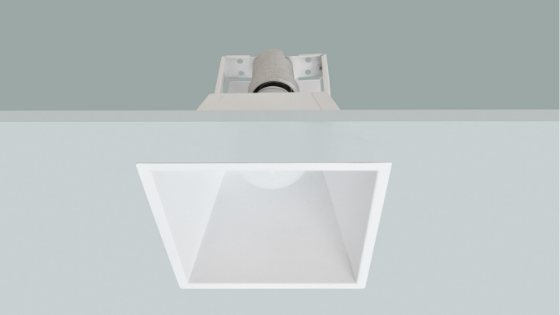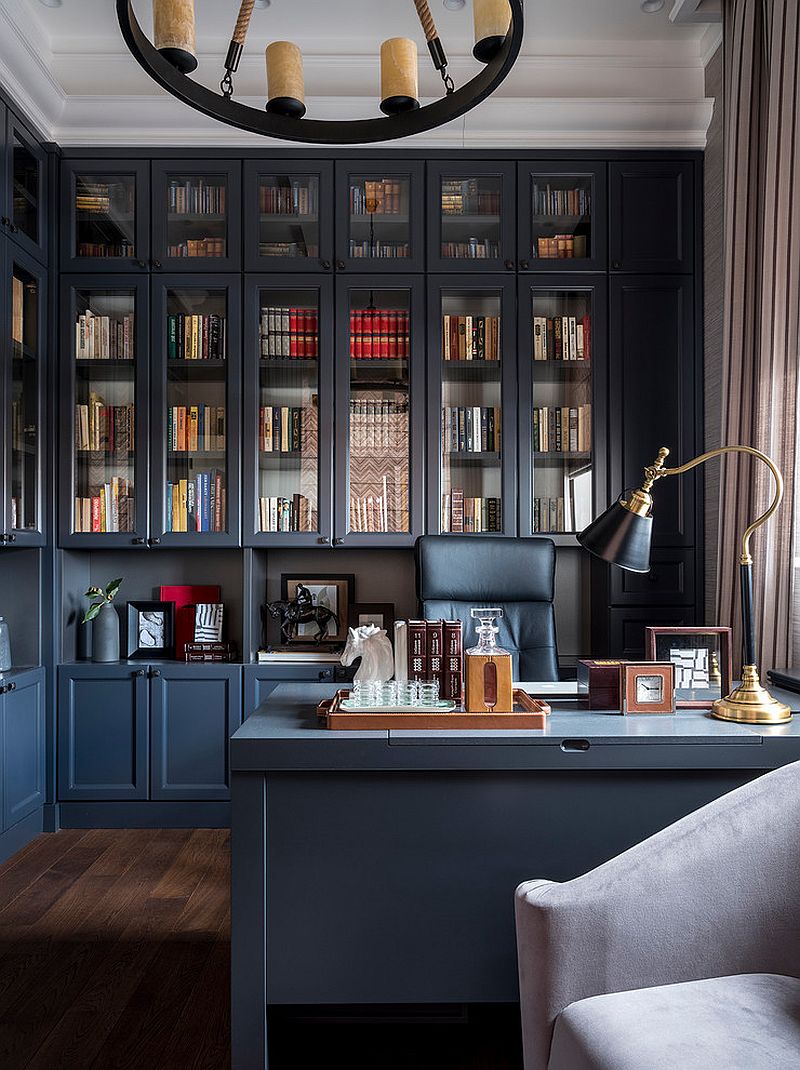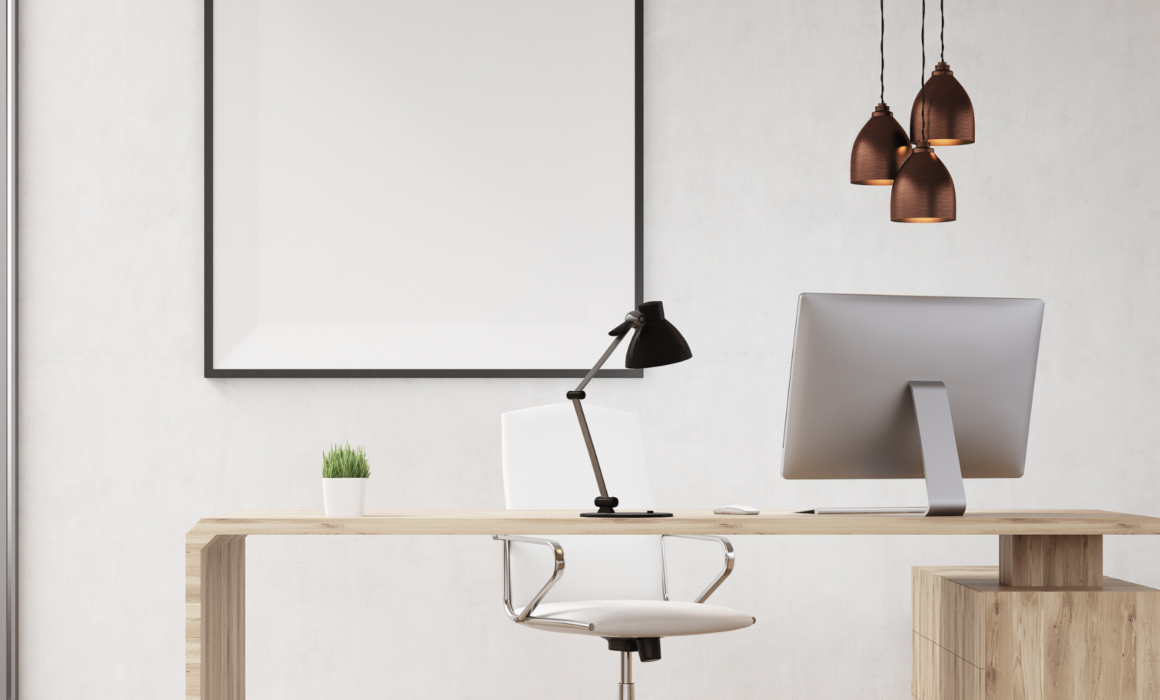The Three Best Lighting Types for Your Home Office
With so many working from home these days, home offices have never been more important. You not only need a space of your own, but it’s important that that space is optimized for your best performance since working from home is already distracting enough on its own!
In this blog, we want to focus specifically on lighting in your home office. Often overlooked, lighting is one of the key components for your office productivity and can be the difference from a happy, productive day and a dreary, unfocused, slog in the office. Today we will look at the three best kinds of lighting you can put in your home office, how they all work together and which ones may be best for you based on your home. The three we will be looking at include:
- Recessed Lighting
- Pendant Lighting
- Chandeliers
Each has its own merits and we look forward to helping you find out which is the right mix for your space!
Recessed Lighting

Recessed lights, also known as downlights or can lights, are a type of lighting fixture installed into the ceiling or wall. They are designed to sit flush with the surface for a sleek and polished finish and are the most common light fixture used in home offices. This is not a coincidence but rather a reflection of the reasons why recessed lighting is so beneficial in office spaces. In this blog we will walk through all aspects of this lighting, why it is best, the parts that comprise it, what is needed for installation, the best kind for your space, and LOTS of examples along the way. Let’s dive in!
Components of Recessed Lights
There are typically two key pieces to a recessed light. They are the housing and trim. The housing and electrical wire along with it is not typically thought about very often because the components are hidden, and the bulb appears to glow from within the opening. It is hidden in the ceiling, or wall, and holds all of the necessary electrical components.
The trim is usually white, or a color to match the space, and is the decorative molding that covers the opening of the light, it can be seen from the room below.
Note: If you are working with incandescent lighting, you have a third piece, the lightbulb.
Is Recessed Lighting Appropriate for My Home Office?

Before we get too far into discussing specifics of recessed lighting in your home office, we should take a step back and discuss if it is a good fit for your home. Because the lights need to go into the ceiling or walls and deal with potential changes in electrical wiring, it’s crucial to plan everything ahead of time and ensure it works with your home.
Always consult an interior designer, General Contractor or electrician, someone who is familiar with residential lighting before you start in on your lighting plan. He or she can talk you through the process of a lighting plan. They can ensure your lights are meeting any local codes and of course install the fixtures for you.
Three Purposes of Recessed Lighting
Now that we know how the lighting is made up and if you are able to install it where you live, let’s discuss the purpose around why these fixtures are excellent for office spaces. Their purpose includes:
- Providing lighting over an entire room.
- Spotlighting or highlighting architectural details or features, for example, a painting or sculpture.
- Washing a wall with light to create a dramatic effect.
In a home office, the first purpose is always crucial, as you want to have lighting that allows you to feel alert in your workspace. It’s also likely that you may have a lovely bookcase or collection that you’d like to highlight and the second purpose perfectly aligns with those desires.
What Size of Recessed Lighting Do I Need?
There are a range of sizes on the market for recessed lighting, and the size of your trim really depends on your application.
When we look at trim sizes, we are generally looking at the measurement from side to side of the actual inside of the trim. This is the opening through which the light shines.
Note: Keep in mind that this dimension is not the overall dimension of the trim.
The standard size recessed light used in many residential applications at one time was 6 inches. Because of the popularity and widespread usage by contractors and builders, this size can look dated. Newer trends seem to suggest that a 3 to 4 inch recessed is the new standard.
Choosing the Right Housing and Trim
As we discussed, recessed lights are made up of a variety of parts but there are two main components you should be aware of from a homeowner’s perspective, they are the housing in the trim. When thinking about the best type for your home office, these are the things we would consider for each.
Recessed Lighting Trim
In non-technical terms the trim refers to the visible parts of the fixture and include such things as the trim ring, a reflector, or baffle, and any other parts that serve to focus or direct the light source. They’re usually referred to as “baffle trims”, “reflector trims”, “eyeball trims” and “wall wash trims” among others.
Trim serves both functional and decorative rolls and since the trim is a large part of a recessed fixture that you see, it’s an important feature from an aesthetic point of view.
The reflector is a cone shaped part that surrounds the lamp and helps direct and focus the light. Reflectors come in a variety of finishes and colors that include black, white, and polished metal treatments.
Baffles are similar to reflectors except they are ribbed instead of smooth. These ribs help to defuse the light and reduce glare.
The trim ring is part of the trim kit that’s most noticeable because it sits on the surface of the ceiling. Whether it’s a circular or square fixture, the trim ring provides the finishing piece that covers the rough cut out in the ceiling.
Other trims like eyeball, eyelid, and wall wash trims serve to position the lamp at various angles and or restrict the direction of the lighting to accent features in the room or other architectural items.
Housing
The housing is the primary structure of a recessed light fixture; it houses the electrical components including the lamp and provides the means for attaching the fixture to the ceiling structure. It also provides the platform for mounting various trim components. There are two basic categories of recessed fixtures and they’re classified by the type of housing in the application.
New Construction: As the name indicates, new construction housings are meant for spaces for the ceiling line, i. e. sheetrock/drywall, has not been installed or has been removed. These housings are designed to be installed between the ceiling joist.
Remodel Housing: These are for installations with an existing ceiling. They enter the ceiling through the hole cut in the drywall or sheetrock and are held in place using clips.
This choice will be much easier to make than the trims, as they’re essentially decided for you based on your home!
What Type of Recessed Trim Is Right for Me?
The trim you choose should be determined by the application and your design aesthetic. Round trims have predominated for sometime, but square designs are becoming more popular. Some options even include a decorative flange or lens that can be glass, metal, or even crystal.
Trims are also defined by function:
- If you’re trying to light a specific object or feature in a room, go for an adjustable or gimbal trim. These are designed to provide control and aim the light.
- If you need a recessed light for a shower or outdoor space, make sure you look for a wet-rated or shower trim. These are designed to keep the fixture safe and functional in a wet space.
- If you’re using recessed fixtures for general lighting, even with down light, you can keep in mind the color and shape of the baffle, which helps diffuse light better than an open trim
Should My Recessed Lighting be LED?
The simple answer to that question is, yes. They are the new wave of lighting, providing the most efficient and long lasting light available. LED’s will have a higher initial price point due to the technology involved. But keep in mind that, while they are more expensive to purchase, they also require much less energy to run and far less maintenance since they have incredibly long life spans.
Pendant Lights

Pendant lights can be a wonderful addition to a home office! Commonly used as accent lighting, pendant lamps add direct light to whatever space they are hung. Most commonly used over a kitchen island or bar, pendant lights and the many shade options that come with them look like hanging jewelry when installed.
Sometimes called a drop or suspender, is a lone light fixture that hangs from the ceiling usually suspended by a cord, chain or metal rod. Pendant lights are usually used in multiples, hung in a straight line over kitchen islands or countertops and sometimes bathroom vanities.
Components of Pendant Lighting
As serious eye candy for designers, selecting pendant lighting can be fun. Think beyond aesthetics and make sure you know exactly what you want your lighting to do. The key components of pendant lighting include the pendant itself and the shades for it.
Light Fixture
While pendant lights come in a variety of shapes and sizes, all models serve a fairly similar purpose – they are decorative while doubling as an excellent lighting source. That said, certain design specifications will be more appropriate than others depending on the priorities that you have laid out for the ambience, appearance and energy performance of your space. There aren’t right or wrong answers for what the fixture should look like, as they all need the same components for hanging and use, so this is truly a style preference.
Shade Material
The most common shading materials for pendant lights include glass, metal, and plastic, however other options include fabric, wood, and stone. Clear glass naturally diffuses light in all directions, and is thus a great solution for areas that must be well lit like kitchens and bathrooms. Metals such as chrome and satin nickel can help create more dramatic light. Plastic is usually the cheapest option on the market, however it is prone to cracking and discoloration over time.
At What Height Do I Hang my Pendant Lights?

The general rule of thumb is that it should hang 30 to 36 inches above the height of the counter or table. So sit at your counter and see where your eyes hit, which will most likely be your measurement. Another rule of thumb is 60 to 66 inches above the floor.
Chandeliers

Chandeliers take on a new meaning when hung in unexpected places, like a home office! Chandeliers are conjurers of decorating magic they not only produce light but they also reflect, magnify, and transform it. The word conjure means to evoke, stir… so wherever you hang a chandelier your eye will be raised to that spot.
Chandeliers, Then and Now
With their opulent appearance … think Versailles with its magnificent, grandiose, chandeliers, they were once reserved for a very formal space, say dining room or entrance hall. However, today’s designers are taking the chandelier out of the dining room and adapting them to a range of different settings. Removing something from its original use and environment tends to make you look at it with a fresh eye. Anytime you create a contrast it captures people’s attention.
What is the Purpose of a Chandelier?
The key is to think of chandeliers not so much for providing light but more for creating intimacy and glamour. Instead of hanging a chandelier in the middle of a room, ignore the architecture and track the future plan. Find a table in the room where you want lamplight and drop a chandelier there. It’s like pinning a brooch on a dress; it shouldn’t necessarily be right in the center of the room.
I personally like to use chandeliers in almost any room as long as the room has a high enough ceiling. Library‘s, powder rooms, family rooms, kitchens, master bedrooms, hallways, entrance halls and bathrooms. In the large houses built today, with double height entry foyer, great rooms, and kitchens, you often need a big chandelier or oversize lantern. Always air on the side of bigger. Small scale fixtures can look too precious. If you go back to the 17th or 18th century, things were much larger than people realize. Playing with contrast and scale is another way to create a bold juxtaposition. It’s always fun to use an oversize chandelier in a minimal space to make a statement.
Where Should a Chandelier Be Placed?
When evaluating where to place a chandelier, consider two elements:
- The first look: How does it look from the front door of your home, from any adjacent rooms, and when you enter the room?
- Ask the task: Does it provide down light on the table or whatever you want to illuminate? We will often install downlights around the chandelier so that the silver and stemware glisten, the white tablecloth is brightened, and the fixture itself sparkles.
Another great way to get the feel of a chandelier in the space is to make a cardboard mock up of the fixture (of the same height and diameter)and try it out in the space. Even though I have been buying chandeliers and hanging light fixtures for clients for years, I always make a mock up before hanging anything.
How High Should I Hang a Chandelier?
When measuring for a chandelier, don’t think about it from the perspective of inches from the ceiling, but rather inches from the ground as ceiling heights always vary! A chandelier that people will walk under needs to be hung at least 6‘8“ off the floor. This has always been a safe rule.
Chandeliers over the dining table should typically be hung between 30 inches and 36 inches above the table, but it can depend on variables such as ceiling height, doorway height, and any artwork on the walls.
Which Bulbs Should You Use?
There are a lot more components to chandelier bulbs than you might expect! Because they are exposed, there are a few things to consider:
Wattage
Most experts advise using 25 to 40 watt bulbs and then putting them on a dimmer, an absolute must for a chandelier. A rule of thumb is that the total wattage of all bulbs should equal 200 to 400 watts for general illumination.
Tint
The choice between torpedo – or flame – tip, clear or frosted bulbs is a matter of taste. A frosted bulb provides softer light, but modernists tend to prefer clear bulbs.
Sockets
While most chandeliers come with smaller candelabra base sockets, if you were having the fixture re-wired, medium base sockets are more rugged and will stand up to the heat better.
Note: Always check the maximum wattage restrictions.
Shades
One way to make a traditional chandelier work in a more relaxed interior is to dress it down a bit for example that might mean adding graphic lampshades to each candle, whether a gingham check, or a silk stripe, natural woven paper shade or plain paper shades. All of these shade choices will tone the actual look of the chandelier down.
Honorable Mention: Lanterns
Beyond the three key kinds of lighting you can have in your office, there is one more that is a favorite of mine in the right space: lanterns.
Once used in old railway stations and front porches of older homes, lanterns add charm to any room. Not at all as serious as chandeliers, they can be made of newly made of glass and chrome for a more modern look or glass and zinc, a weathered gray metal for a more transitional look. Or if you are lucky enough to find an old lantern, say in an antique shop or flea market, maybe weathered oil rubbed bronze or brass you can have it rewired. Lots of lighting stores will rewire old fixtures for a very reasonable fee and the look when it is hung, is amazing.
I have purchased light fixtures all over the US and Europe when re-wired and installed they add character to any room.
Conclusion
Whether your taste and needs lead you to recessed lighting, chandeliers, lanterns or pendant lights or a combination, each serves a purpose and all add character to your home. All create a specific atmosphere and it is important to consider both your space as well as your style when making your selection.
Sometimes this task can feel daunting, especially when the space is completely blank, or so outdated it’s difficult to picture what it could look like. This is where consulting with an interior designer, like us, can help take what is in your head from a style and preference perspective, and apply it to your space with ease.
If you are struggling with lighting in your home office, or any space in your home we would love to discuss with you! Fill out the contact form and we will be in touch.

